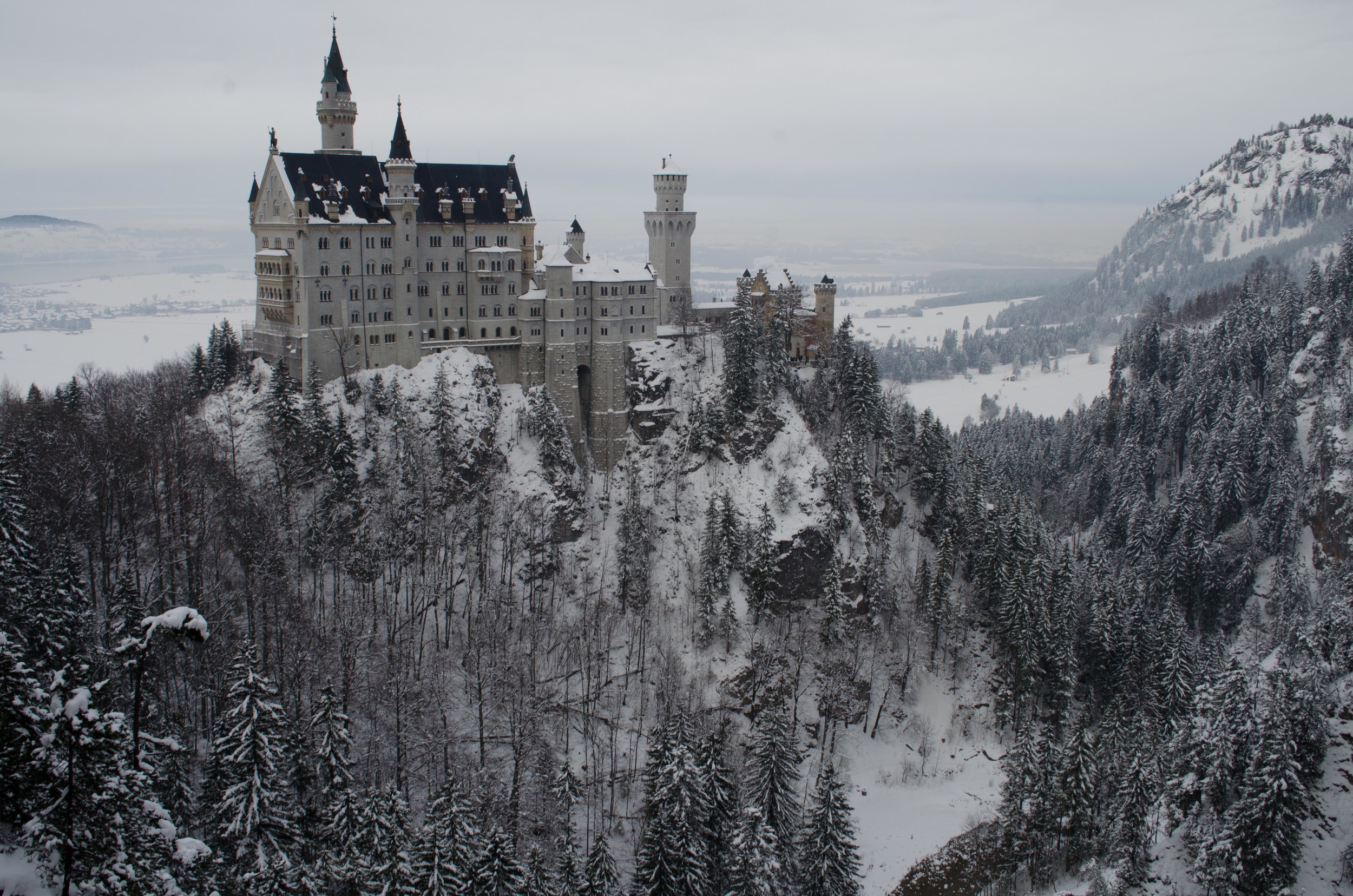On Saturday, I took advantage of the blanket of snow that has covered Southern Germany this week, and hopped on a train to Fuessen in order to go see Neuschwanstein, the castle built by Ludwig II of Bavaria in the late 19th century. For those who don't know, Ludwig was the young heir to a beleaguered Bavarian State in 1864. He quite quickly became caught up in first the Seven-Years War and then the Franco-Prussian war, and consequently in 1870 agreed to Bismarck's creation of the German Empire, thus losing both Bavarian independence and his ow sovereignty. He had always been interested in the arts and in Germanic myth, and became the patron of much of Wagner's work. Particularly once he lost his actual political power (and had his nation swallowed up by another), he became even more wrapped up in a view of mythic kingship, heroic nationalism, and escapism, and slowly descended into eccentricity and/or madness. He died (likely by suicide) in 1886, a day after being deposed for mental instability. Despite this rich and complex biography, he is now best known outside of Bavaria for his castles: Herrenchiemsee, Linderhof, and Neuschwanstein. I'll write more about his castle-building campaign in later posts--for now, I'll just share a few impressions and pictures of Neuschwanstein and Hohenschwangau (which I last visited as a kid).
As my colleague Tom Lekan (who studies tourism) pointed out, despite the site's popularity, Schwangau and the castle complexes are remarkably underdeveloped in terms of crazy tourist infrastructure. In fact, it was oddly refreshing to me that the ambiance had changed very little since I was here as a child. The signage is even cute and unobtrusive!
We chose to skip formal castle tours for now (I'll go back and see both castles later in my stay) and take the hike up to the steel cable bridge (the Marienbrueke) that Ludwig rebuilt in order to hightlight the beauty of his castle. This was really a great day--the walk was strenuous but beautiful, and the snow muted everything--the forest was hushed--you could hear branches creaking and the heavy snow tumbling down off of the pine trees. As you climb up through the 19th century fir forest, you only rarely see the vista down below, and never see the castle (last seen from below in town). Then you reach the bridge, and, well, see this:
 Ludwig's eccentric, extravagant, and ambivalent castle (bankrupted 19th century Bavaria, underpins modern Bavaria's economy) is extraordinary--and I'll write more on it after I do the full tour. What I was most struck by this trip (beside the crystal beauty of the snowy Bavarian landscape) was how much Hohenschwangau contributes to this story.
Ludwig's eccentric, extravagant, and ambivalent castle (bankrupted 19th century Bavaria, underpins modern Bavaria's economy) is extraordinary--and I'll write more on it after I do the full tour. What I was most struck by this trip (beside the crystal beauty of the snowy Bavarian landscape) was how much Hohenschwangau contributes to this story.
Hohenschwangau was Ludwig's "childhood home"--his father built this "lego castle" on the site of a ruined 12th century castle between 1832 and 1836. It is "Neo-Gothic" and It became the family retreat from court life in Munich, and one can see how much it's stylized medievalism and "wilderness" setting must have influenced the artsy, imaginative young Ludwig. It helps contextualize his own Orientalism and Romanticism, yet also highlights the scale and expense of Ludwig's castles by contrast.
All in all, a wonderful day out, and I'm looking forward to returning and to seeing all three of Ludwig's palaces.


